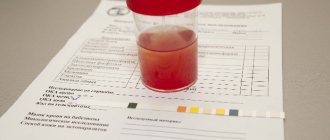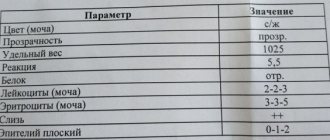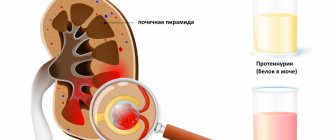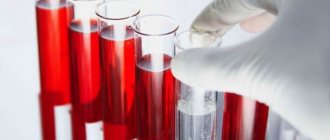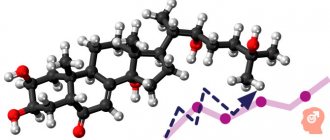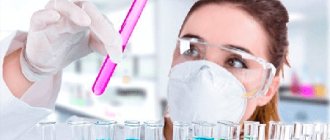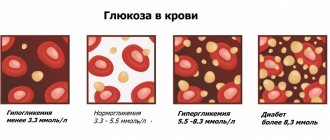Laboratory testing of urine is a routine medical appointment,
Almost every person who is interested in their health receives it. Having received a bunch of referrals for tests and examinations, patients usually believe that a urine test is the most basic of them. Collect urine in a jar - what could be easier?
Meanwhile, based on the results of a urine test, one can objectively judge how one of the most important cleansing systems of the body, the urinary system, functions. Malfunctions in its operation can be deadly. Therefore, urine for analysis must be collected correctly so that foreign impurities do not distort the real picture.
Preparing to collect urine for analysis
To get good material for analysis, you should start preparing a day before collecting urine -
- refrain from eating spicy, salty and spicy foods;
- do not eat foods that change the color of urine - beets, carrots and others;
- do not drink alcohol, coffee and mineral water;
- exclude sweet foods;
- It is advisable not to take vitamins, antibiotics, antipyretics, or diuretics (you should consult your doctor about this);
- stick to the usual amount of fluid you drink;
- exclude heavy physical activity, visiting the sauna, baths.
It is also worth preparing a container for collecting urine in advance. The best option is a plastic container with a volume of 100-200 ml, sold in a pharmacy. But it can also be a glass jar with a tight lid that needs to be sterilized. In the morning, the jar should be dry without any traces of cleaning agents or disinfectants. It is better not to use plastic boxes - some types of plastic can release foreign impurities.
Since hygiene procedures will need to be carried out in the morning before urine collection, you should prepare in advance
- means for washing – a weak solution of laundry soap (not toilet soap, not shower gel),
- solution of furatsilin or potassium permanganate,
- towel.
When is research required?
Urine is one of the important products of human life. Water is the main component (up to 95-99% of the volume), but in addition to liquid, waste, toxins, and hormones are removed from the body.
Urine analysis is informative and can be prescribed not only during a medical examination, but also:
- to assess the effectiveness of therapy, postoperative condition;
- if you suspect some digestive problems;
- to determine a person’s condition during infections and inflammations;
- when diagnosing possible problems with metabolism;
- find out if there are any problems with the prostate gland or tumors;
- to identify pathologies of the urinary system, kidneys (pyelonephritis), liver, urinary, as well as to evaluate prescribed therapy.
The study helps to identify pathological conditions even before clinical manifestations, i.e. in the early stages, when treatment will be more effective and faster.
On the morning of the test
Upon waking up, you should carry out hygiene of the external genitalia by washing them thoroughly. If this is not done, foreign bacteria, dead epithelial cells, leukocytes, and red blood cells will be found in the urine. All this interferes with establishing a correct diagnosis.
Women
- You should wash yourself by directing the stream of water from front to back so as not to introduce bacteria from the anus into the urethral area;
- when washing, the labia should be parted;
- if there is discharge from the vagina, then a tampon should be inserted inside;
- If possible, it is better to refrain from urine testing during menstruation (you should consult your doctor about this).
For men
- When washing the genitals with a solution of laundry soap, furatsilin or potassium permanganate (light pink), you must not forget about the head of the penis and rinse it thoroughly, moving the foreskin.
After drying the genitals with a waffle towel, you can begin collecting a urine sample.
Procedure:
- Once you begin the process of urination, allow the urine to pour into the toilet for the first couple of seconds.
- Without interrupting the process, place a container or jar under the stream and draw 100-200 ml. Women are advised to hold their labia, and men are advised to retract their foreskin.
- Without interrupting the stream, remove the jar and complete urination.
- Carefully seal the container, attach to it the referral and a tag indicating the patient's name, age, date and name of the referring physician. Sometimes they also indicate the medical card number.
Then you should take the analysis to the laboratory. It is advisable to do this within two hours after collection, since then salts precipitate in the urine, which can distort the results. If urine needs to be preserved, then it can be kept on the bottom shelf of the refrigerator at a temperature of plus 2-8 degrees Celius for up to 8 hours.
Features of urine collection in newborns and infants
It is important to understand that baby urine squeezed out of diapers or drained from a potty is not suitable for analysis, since with this collection method it is impossible to avoid foreign impurities.
In order to correctly pass urine tests on young children, you should:
- purchase a special children's urinal bag from the pharmacy (different for boys and girls);
- observe the child’s urinary patterns throughout the day;
- wash the child between urinations, attach a urine bag;
- After collecting urine, pour it into a pharmacy container.
Instead of a urine bag, you can use new plastic bags.
Interpretation of a general urinalysis (UAM) in women
Deviations from the norm of many indicators may be of physiological origin or indicate various pathological processes in the body. It must be remembered that interpretation of the results of a general urine test should be carried out only by the attending physician, since the results of laboratory tests are not the only criterion for making a diagnosis and prescribing appropriate treatment. They should be considered in conjunction with medical history and the results of other possible examinations, including instrumental diagnostic methods.
At the medical office, you can get personal advice from a Doctor Q service doctor on deciphering the results of a urine test during your appointment or by phone.
Color. The normal color is yellow of varying intensity. It may change when you eat certain foods and take certain medications. Whitish, dark brown or other uncharacteristic color indicates the presence of pathology. Urine should be clear.
The smell of ammonia, rotting apples or rotten meat indicates various diseases (for example, cystitis, diabetes, purulent inflammation).
Urine reaction. Normal pH is 5-7 (slightly acidic reaction). Increased acidity is characteristic of febrile conditions, renal failure, and diabetes. Occurs in people on a high-protein diet, during fasting, or during heavy physical activity. An alkaline reaction is observed in chronic infectious diseases and in vegetarians. Acidic urine creates conditions for the formation of urate stones, while alkaline urine creates conditions for the formation of phosphates.
Density readings are used to assess kidney function. During the day, the specific gravity of urine fluctuates.
There is normally no protein in the urine (proteinuria). Its appearance is a marker of the presence of various diseases (inflammatory infectious diseases of the urinary tract, kidney pathology and others). Protein is also detected in the urine after severe hypothermia and overheating, high physical activity, and when consuming large amounts of protein in food.
There should normally be no glucose in the urine. Its detection in a biomaterial sample may indicate the presence of diseases (diabetes mellitus, pancreatic cancer, pancreatitis, etc.), as well as severe stress and consumption of large amounts of carbohydrates.
Bilirubin is detected in hepatitis, cirrhosis, obstructive jaundice and other pathological conditions associated with liver damage.
Urobilinogen in high concentrations indicates liver damage, hemolytic jaundice, and gastrointestinal diseases. An increased amount of ketone bodies indicates a disorder in protein, carbohydrate or lipid metabolism. Nitrites indicate a urinary tract infection.
Flat epithelium is the superficially located skin cells of the external genitalia. Detection of it in urine has no diagnostic value.
Transitional epithelium is found in the kidneys, ureters, bladder and upper urethra. Single cells can be found in urine sediment in healthy people. They are found in large quantities during intoxication, after instrumental interventions on the urinary tract, with jaundice, kidney stones and chronic cystitis.
The renal epithelium in healthy people is not found in sediment microscopy. Found in patients with nephrosis and nephritis.
Red blood cells are normally present in urine in small quantities. A small number of red blood cells can be observed after sports activities, lower back injuries, hypothermia and overheating. The appearance of a large number of red blood cells in the urine can occur in various pathologies (glomerulonephritis, nephrosis, collagenosis, heart disease, sepsis, influenza, infectious mononucleosis, rubella, tonsillitis, dysentery, etc.).
Leukocytes are present in the urine of healthy people. An increased number of leukocytes in the urine of women can occur when urine is contaminated with vaginal secretions. A high content of leukocytes in the urine occurs with pyelocystitis, pyelonephritis, fever of various origins, and genitourinary tract infections.
Cylinders are cylindrical structures that are primarily composed of protein and/or cells. They are usually found in pathologies of the urinary system (glomerulonephritis, pyelonephritis, renal tuberculosis, diabetic nephropathy, chronic kidney disease, renal amyloidosis, fever, scarlet fever, myeloma, osteomyelitis, systemic lupus erythematosus, etc.).
Mucus performs a protective function and is secreted by special cells of the genitourinary system. Normally, its content in urine is insignificant, but during inflammatory processes it can increase.
Salt crystals appear depending on the pH of urine and its other properties, and diet. May indicate mineral metabolism disorders, the presence of stones, or an increased risk of developing urolithiasis.
Bacteria indicate a bacterial urinary tract infection. But they can occur when urine is contaminated with bacteria from the skin and vaginal discharge.
According to Zimnitsky
The day before collecting urine according to Zimnitsky, it is recommended to avoid intense physical activity, not drink alcohol, and go to bed at your usual time.
To collect biomaterial, you must first purchase special kits from the medical center (containers, test tubes with colorful caps, adapters in the amount of 8 pieces, as well as instructions).
Collection rules
- Before collecting biomaterial, write on each container your full name, date of birth and time period for urine collection: 09, 12, 15, 18, 21, 24, 03, 06 hours. Make inscriptions legible.
- Urine collection must begin in the morning at 06:00, after completely emptying the bladder into the toilet.
- Next, urine is collected every 3 hours for a full day, the last time at 06:00 am the next day. A separate container is used for each period of time.
- Each container must be placed in a cool, dark place.
- The volume of each collected portion is measured, the urine is mixed and collected into a vacuum urine tube with a stabilizer (variegated lid).
- Label the resulting 8 tubes (full name, portion number, collection time, volume of urine excreted)*.
- The day after the last urine collection, all test tubes (8 samples) must be delivered to the CITILAB medical center.
*Follow the detailed instructions included with the urine collection kit.
Hormones
The tests that are taken most often are: cortisol, C-peptide, metanephrines and normetanephrines, adrenaline, norepinephrine, dopamine, serotonin, histamine, etc.
- 3 days before urine collection, do not drink alcohol, avoid intense physical activity, and stop taking medications (in consultation with your doctor).
- The day before, do not overeat, do not eat fatty, fried, salty foods; no smoking.
To collect biomaterial, you must first purchase a special kit for collecting daily urine from the CITILAB medical center (a dark container with 3-liter graduations, a test tube with a beige cap, an adapter, if necessary, as well as instructions for collecting daily urine).
Attention: For some studies it is necessary to use a preservative, which can be obtained from CITILAB. The container with urine should be stored in the refrigerator at 4-8 °C during the entire collection time! Avoid exposing the sample to light. Keep urine out of the reach of children, as concentrated acid may be used as a preservative when collecting 24-hour urine. It is unacceptable to send urine for testing in containers not intended for these purposes, since residues of the ingredients contained in them can significantly distort the results of the analysis.
Collection rules:
- If required, place the preservative in a container until 24-hour urine collection.
- In the morning at 06:00, completely empty your bladder. Then collect all the urine during the day in 3 containers, the last time in the morning at 06:00 the next day.
- At the end of the daily urine collection, mix the sample thoroughly (smoothly invert the tightly closed container 15-30 times), then accurately measure the amount of urine in milliliters (daily diuresis), which will later need to be indicated on the tube label.
- Using a special adapter, collect urine from the container into a vacuum tube with a beige lid.
- On the label of the test tube with urine, write legibly your full name, daily diuresis in milliliters, date and name of the study. For children under 14 years of age, height and weight may be required in some cases.
- Deliver the test tube with the collected daily urine to the CITILAB medical center.
Daily urine
Urine collection is carried out for 24 hours in compliance with the usual drinking regime - 1.5–2 liters per day.
Collection rules
- In the morning, between 6:00 and 8:00, empty your bladder (pour this portion of urine into the toilet).
- During the day, collect all urine in a special container with a volume of at least 2 liters.
- Collect the last portion at exactly the same time when collection began the day before (mark the start and end times of collection).
- At the end of the daily urine collection, mix the sample thoroughly, smoothly turning the tightly closed container 15–30 times.
- Measure and record your 24-hour urine volume (urine output).
- Using a sample transfer device from a container, collect urine into a vacuum tube.
- Label the test tube (sample number in accordance with the referral form) and submit it to the laboratory indicating the total volume of urine excreted per day.
Attention. Store urine in the refrigerator during the entire collection period.
If the analysis requires collecting urine within 10–12 hours, collection is usually carried out at night:
- Before going to bed, empty your bladder and mark the time (discard this portion of urine).
- Then urinate 10–12 hours later into a special container and deliver this portion of urine to the laboratory for research.
If you cannot hold urination for 10–12 hours, urinate into a container in several steps and note the time of your last urination.
If it is necessary to collect urine 2 or 3 hours in advance:
- Empty your bladder (throw away this portion), mark the time and exactly after 2 or 3 hours, collect urine for examination.
Before collecting 24-hour urine to determine the concentration of hormones (steroid profile), for 3 days before collecting urine, you should not use drugs containing rauwolfia, theophylline, nitroglycerin, caffeine, ethanol, chlorpromazine, contrast dyes, hydroxymethoxyphenylglycol, imipramine, phenacetin, propranolol. It is also prohibited to consume foods containing serotonin (chocolate, cheeses, bananas), and not to drink alcohol. Avoid physical activity, eliminate stress, do not smoke.
Daily urine for testing for catecholamines, metanephrines, catecholamine metabolites, C-peptide, insulin, histamine, and steroid profile can be stored at a temperature of 2–8 °C for no more than 24 hours. For longer shelf life, freeze. Can be stored frozen for up to 1 month. Delivery frozen. Do not defrost.
Daily urine for cortisol and adrenaline can be stored at a temperature of 2–8 °C for up to 14 days.
Urine for testing for the UBC-II tumor marker is stored at a temperature of 2–8 °C for no more than 24 hours.
Basic blood biochemistry indicators
- Glucose. Indicates the presence and absence of diabetes mellitus. Bilirubin is common, indicating liver problems.
- Urea is an indicator of kidney function.
- Uric acid. Its level can be increased in case of gout, liver diseases, eczema, psoriasis, etc.
- Total protein. May be increased in blood diseases, liver cirrhosis, etc.
- Creatinine is excreted by the kidneys.
- Amylase increases with problems with the pancreas.
- Cholesterol increases with anemia, kidney and thyroid diseases.
Where is the analysis taken?
A general urine test is carried out in a regular clinic at the registration address; it can also be a private clinic. How long does a urine test take?
In large cities there are a large number of private centers where you can get tested at any time, and not just strictly from 8 to 9 am, as in a public hospital.
To carry out the analysis, you must provide a referral from your attending physician. The cost in the latter case may be higher, it all depends on the capabilities and individual preferences of the patient.
